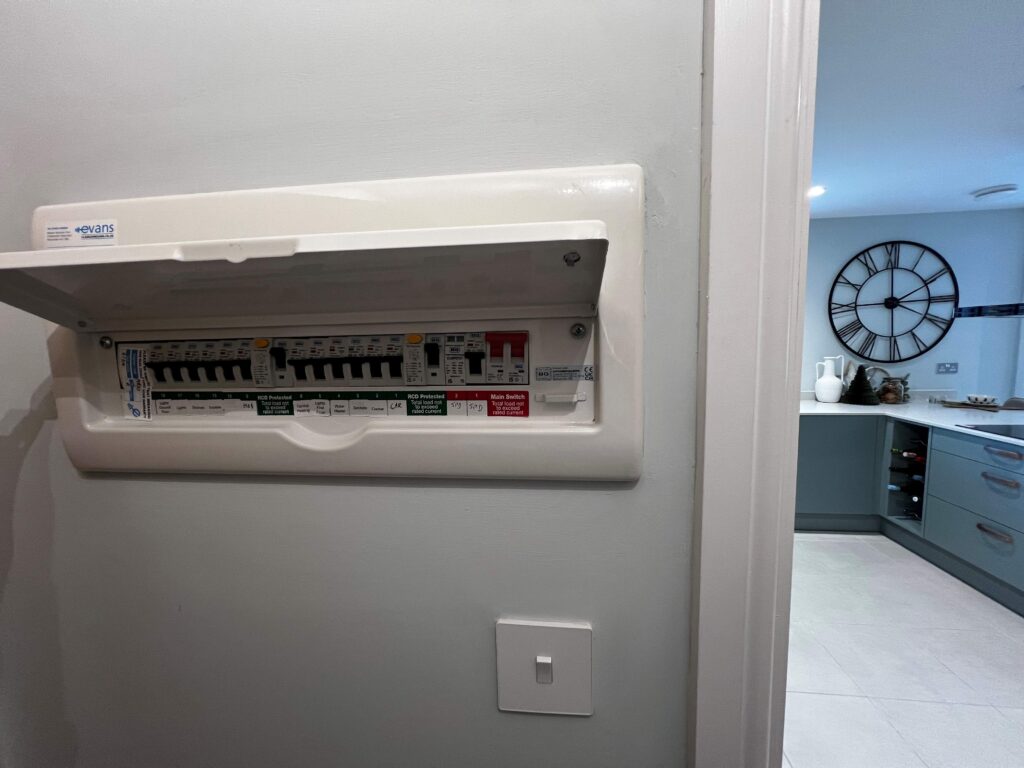Larock Home architects have installed Helvar lighting products and sensors to help energy conservation at a development in Harrogate
Architects at Larock Home have designed an ambitious family home in the desirable spa town of Harrogate. A world away from its rural neighbours in the Dales, this property is a clinical expression of modernity, with clean, exact finishes, space, light and a sophisticated specification throughout. Building upon the contemporary design is an equally modern automated infrastructure which was conceived, designed and installed by specialist integrators, Konnectiv Technology and features a range of Helvar lighting products and sensors that work towards significant savings in energy consumption.
At the hub of 1.Zero.4’s network of smarthome technology is an AMX central controller which links with Helvar’s Imagine lighting router. From the router, control protocols are fed to the entire network of Helvar multi-sensors and keypads and also to the AMX kit, bringing the component parts of the system on to one network for increased efficiency and cohesion. By swapping out some of the lamps and replacing with LEDs, the lighting load at 1.Zero.4 was nearly halved.
“There are 31 Helvar multi-sensors in total which span the substantial five bedroom property,” says Kris Hogg, Managing Director at Konnectiv Technology. “Each one incorporates a constant light and PIR sensor to fulfil two key aspects of the lighting management; our brief outlined a desire for the home to omit no waste and the sensors proactively adjust lighting levels to achieve Larock’s wishes.”
The PIR sensors work on an absence/presence system and have been configured to achieve a series of responses. If a room is vacated and the lights left on, the PIR aspect of the multi-sensors will recognise this and communicate via the Helvar Imagine router to the central AMX controller. This controller then activates a set of state-dependent commands that not only turn the lights off, but also the AV and other connected devices. For example, if a child leaves their bedroom the system will turn the lights and TV off. If the child has merely walked to the kitchen to get a drink the sensors will also pick up their presence when they return and the light sources, as well as the TV, will then react accordingly.
“We were trying to make 1.Zero.4 the most eco-friendly house of its type, combining elements of smarthome technology with green solutions such as the solar panels and rain harvesting,” says Kris. “Bringing the environmental controls – the heating, cooling, lighting and blinds – on to the same system made perfect sense, as we knew that having all these aspects working together would render greater energy savings.”
This efficiency is best exhibited by the constant light aspect of the multi-sensors which feedback the real-time lumen levels of each zone in the house to the central control processor. If lumen levels exceed the par levels, which have been pre-set, then the system will automatically correct itself to minimise energy draw, similarly, if the room darkens the light level will increase.
Through a combination of these sensors and halved electrical load, Konnectiv Technology has been able to predict a total payback time of three years on this system (based on 7 hours of illumination per day). This translates to a saving of £2328.40 a year on the previous lighting arrangement.
“Where this system really hits its stride is in the westerly facing rooms,” says Hogg. “Across the substantial glass fronts we have the system communicating between the Helvar sensors, blinds and an astronomical clock. As thermal gain increases in these rooms the blinds begin to close to regulate the temperature and, in turn, the light sensors speak to the processor to increase the level of light within the room.”
With a combination of Helvar and AMX touchpanels, and Konnectiv’s iPad control system, spread around 1.Zero.4, the light levels can be adjusted and will override the automatic settings when required. However, the vision on this project was to install systems that worked without any real interaction with the homeowner, to proactively reduce the energy spend.
As energy efficiency and LED technologies become more accessible to the residential market, this project hints at what the future holds, for not just the modern smarthome, but all homes in the future.
For more information, visit www.helvar.com











